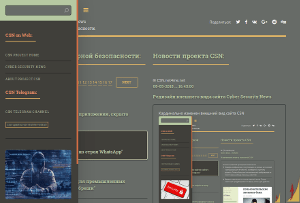Cisco Unified Intelligence Center Vulnerability Allows Remote Attackers to Upload Arbitrary Files
- С сайта: Vulnerability(cybersecuritynews.com)
- Вернуться к списку новостей
Cisco Unified Intelligence Center Vulnerability Allows Remote Attackers to Upload Arbitrary Files
Author: Guru BaranA critical vulnerability in Cisco’s Unified Intelligence Center (CUIC) web-based management interface has been classified with high severity, allowing authenticated remote attackers with Report Designer privileges to upload arbitrary files to affected systems.
Tracked as CVE-2025-20274 and assigned a CVSS Base Score of 6.3, the weakness stems from insufficient server-side validation of file uploads, enabling adversaries to store malicious payloads and execute arbitrary commands at the root level on vulnerable appliances.
Key Takeaways
1. CUIC flaw lets Report Designers upload files and seize root access.
2. Weak server-side validation in the web interface.
3. All CUIC, Packaged/Unified CCE, and UCCX installs exposed; no workaround.
Cisco published a Security Advisory on July 16, 2025, providing details, affected versions, and fixed releases, but noted that no effective workarounds exist.
CUIC File Upload Vulnerability
The flaw resides in the file-upload handler of CUIC’s management portal, which fails to properly verify the contents and metadata of files submitted by users authenticated with at least the Report Designer role.
When processed by scheduled reporting tasks or administrative routines, these uploaded artifacts can be executed, granting the intruder arbitrary command execution.
The issue is cataloged against CWE-434 (Unrestricted Upload of File with Dangerous Type), underscoring the risk of insecure file handling in web applications.
Successful exploitation of this vulnerability allows escalation to root privileges, undermining the integrity of call-center analytics and potentially exposing sensitive customer interaction data.
Organizations running CUIC as part of Packaged Contact Center Enterprise, Unified CCE, or embedded within Unified Contact Center Express should consider their exposure immediate and severe.
An attacker who gains access to a Report Designer account often provisioned for Power Users or analytics teams can leverage the weakness to introduce backdoors, exfiltrate data archives, or pivot laterally into adjacent network segments.
Given the absence of viable workarounds, detection relies on monitoring unexpected file system changes and anomalous process executions on CUIC appliances.
Risk Factors Details Affected ProductsCisco Unified Intelligence Center (CUIC), Packaged Contact Center Enterprise (Packaged CCE), Unified Contact Center Enterprise (Unified CCE), Unified Contact Center Express (Unified CCX)ImpactArbitrary file uploadExploit PrerequisitesValid credentials for a user account assigned at least the Report Designer roleCVSS 3.1 Score6.3 (Medium)
Mitigations
Cisco has released software updates for CUIC releases 12.5(1)SU ES05, 12.6(2) ES05, and later, which enforce strict file-type validation and sandbox execution of uploaded artifacts.
Administrators are urged to upgrade immediately to the nearest fixed release and verify that the appliance’s software version matches one of the first fixed releases.
Customers without active service contracts should contact Cisco TAC with their product serial number and a reference to the advisory to obtain firmware updates at no additional cost.
After patching, operators must audit existing report templates and uploaded libraries to remove any unauthorized content.
In all cases, organizations should enforce the principle of least privilege by restricting Report Designer access, implementing network segmentation to isolate management interfaces, and maintaining up-to-dateincident-responseplans that include file-integrity monitoring on critical infrastructure components.
#Cisco #Cyber_Security #Cyber_Security_News #Vulnerability #cyber_security #cyber_security_news #vulnerability
Оригинальная версия на сайте:


